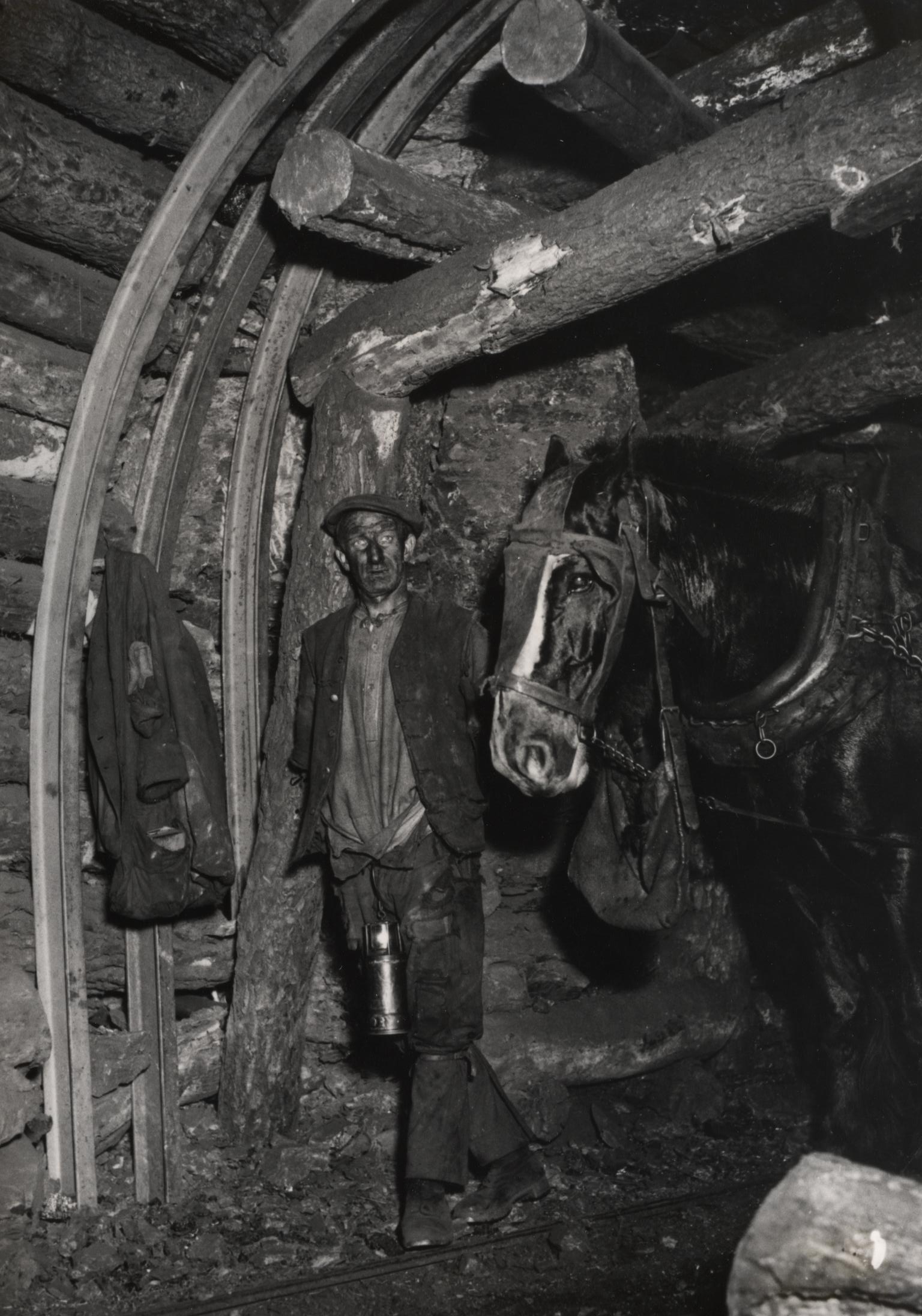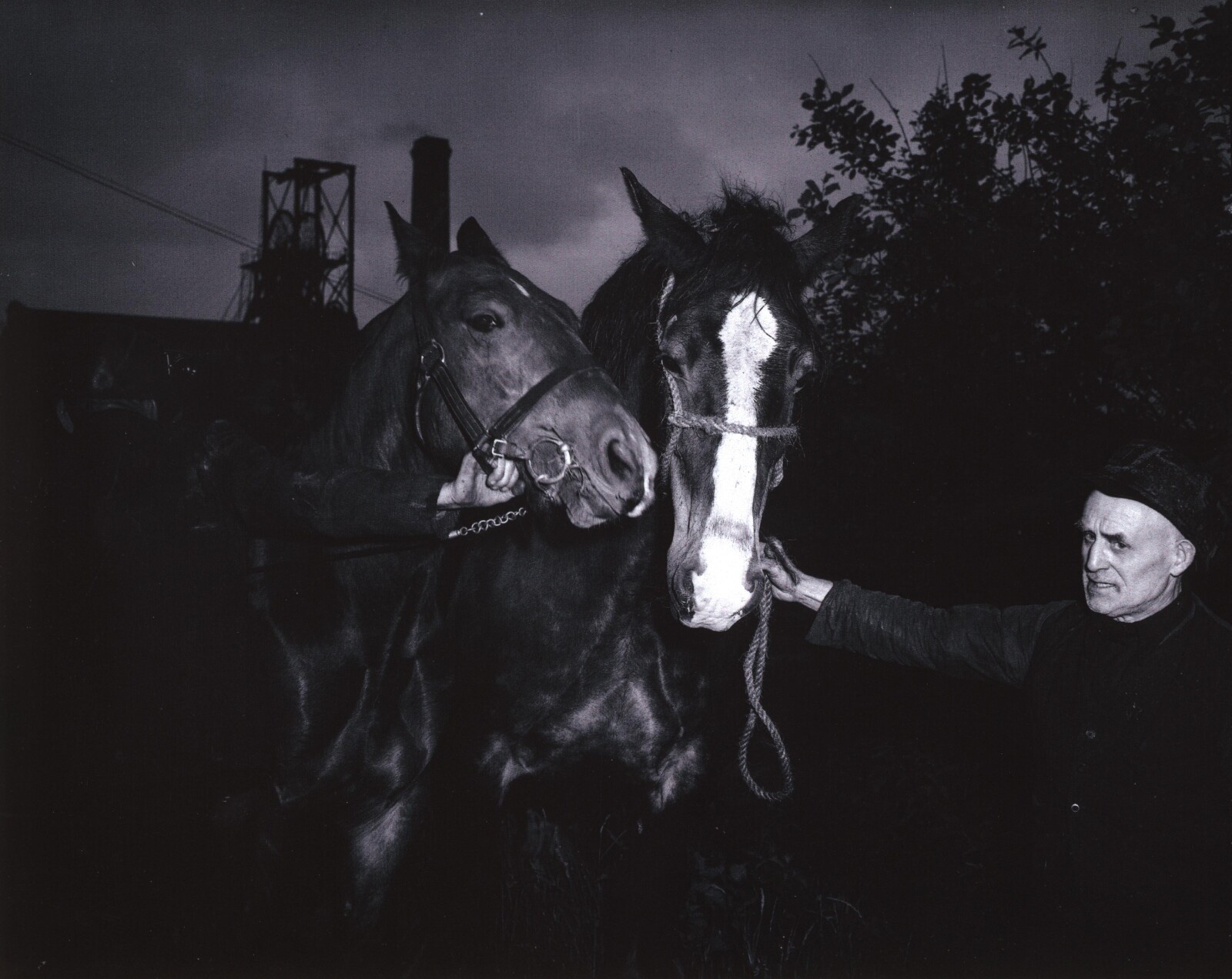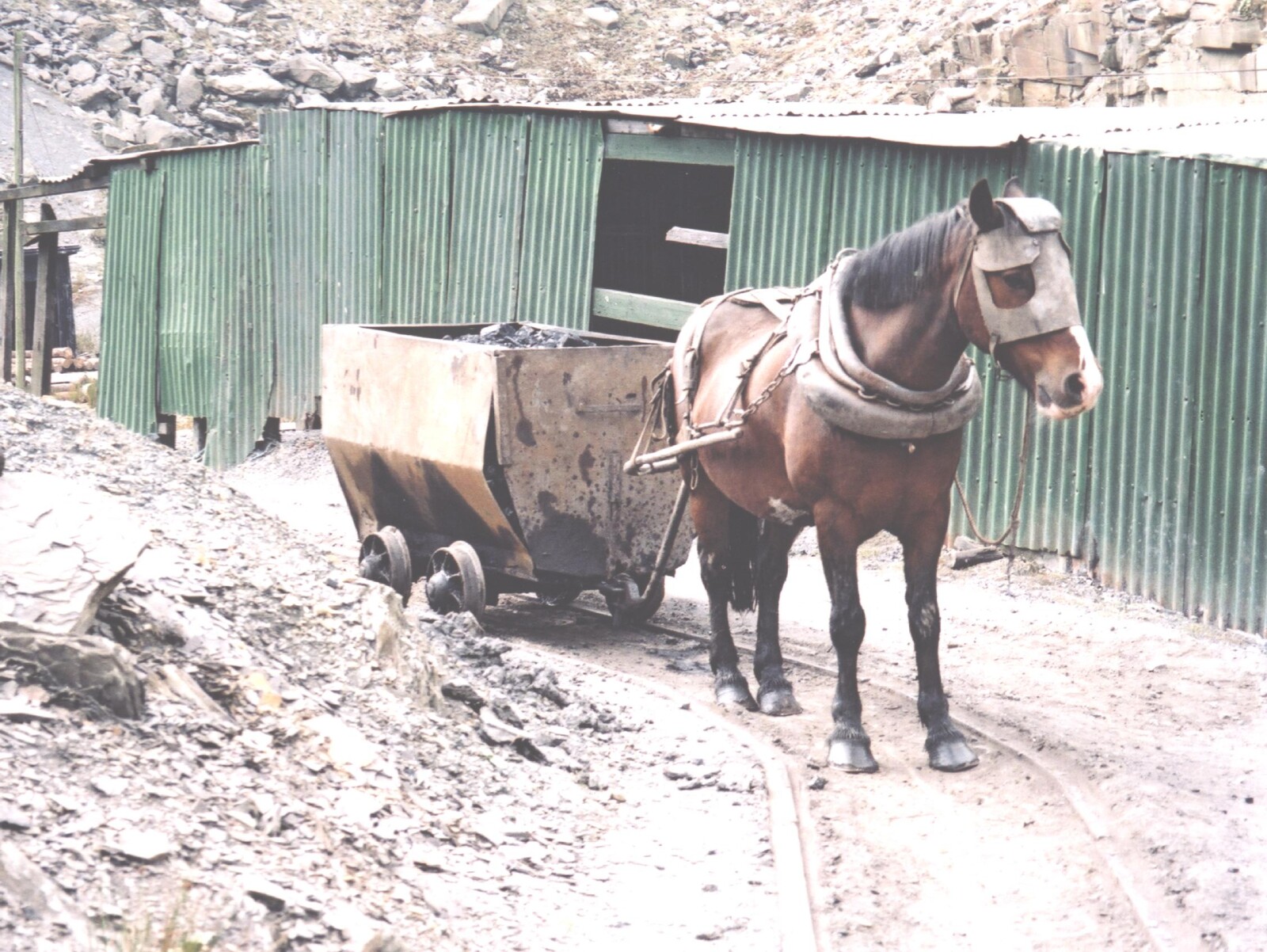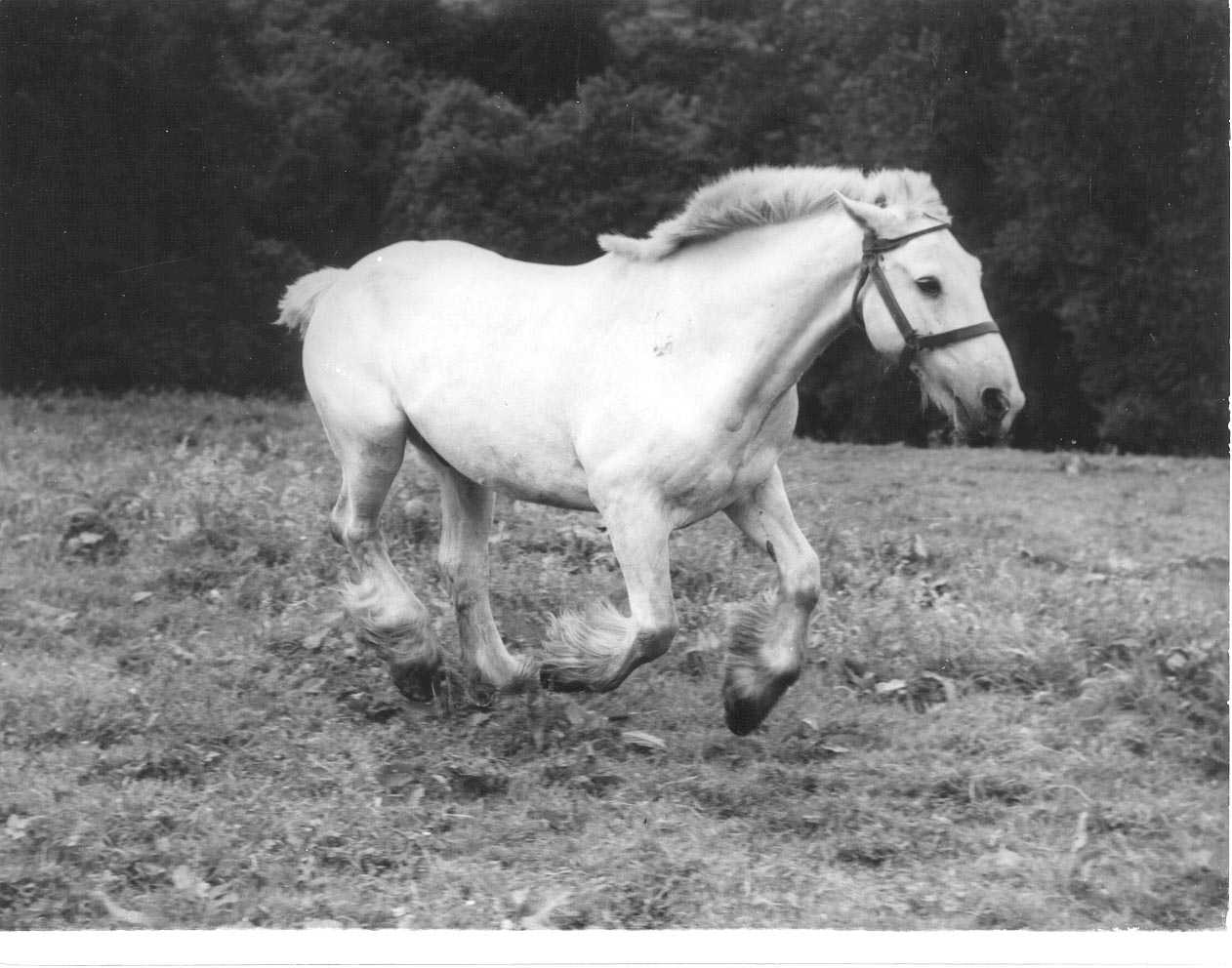Welsh colliery horses




Horses have been closely connected with coal mining since the early days of the industry. They have been used to transport coal from the collieries to the customer, have been used to power winding and pumping engines and, most importantly to move coal from the coalface to the shaft.
In 1878 the RSPCA calculated that there were over 200,000 horses at work in British mines. The numbers decreased as mechanisation became more common, but they continued to be used throughout the twentieth century. The last Welsh colliery horse was probably Robbie who retired from Pant y Gasseg Mine in 1999.
Most commonly known as ‘pit ponies’ by the general public but Welsh colliery horses were usually around 15 hands high – the same size as Henry VIII’s warhorses. It is often claimed that they went blind, but a blind horse would not have been very useful underground and any animal which did lose its sight was usually brought to the surface as soon as possible.
Although they were essential for the production of coal before introduction mechanised haulage, use horses in industry has often been highly controversial. The owners argued that vital economic process winning while animal lovers regarded their as inhuman.
In between these opposing sides were the mineworkers, who may have felt sympathy for these animals. However, they could turn a blind eye to any callousness, or even be cruel themselves, if their pay packets were under threat.
Welsh colliery horses were usually around 15 hands high and males, mostly geldings but some stallions were kept. The majority were of the Welsh Cob type but larger horses such as Shires and imported Belgian horses were also kept, especially on the surface or in main haulage roads. When stocks of horses were low, they could be obtained from as far away as America and Russia. Smaller ponies, around 13 hands, were sometimes used for light haulage duties.
They had to be at least 4 years old before being accepted into colliery work. In 1893, the average life expectancy of a horse was between eight and nine years, with around 6% killed in accidents. By 1950s this risen ten fifteen although there were some on ‘light jobs’ still employment over twenty age.
By the 1930s, most horses worked between forty-five and sixty hours a week. After 1949 the maximum working hours were to be not more than forty-eight hours, and no more than seven shifts, per week. They were also entitled to the same twenty-minute break as the men.
In 1938, colliers were entitled to an annual week’s paid holiday and the horses were usually allowed above ground as well. By 1948 both the colliers and horses got a two-week annual holiday.
By 1878, the RSPCA estimated that there were around 200,000 horses working in British mines. By 1913 this had decreased to 70,000, because of improved mechanical haulage methods. In 1930 it was reported that 25 Welsh collieries had no horses at all. In 1947 there were some 8,000 Welsh colliery horses, by 1967 there were only 417. By the 1980s National Coal Board horses were being retired but, in smaller, ‘private mines’ horses were in use for a few years to come.
The last Welsh colliery horses, ‘Gremlin’ and ‘Robbie’ retired from Pant y Gasseg (‘Horses’ Hollow’) Mine, Pontypool, in 1999. They were sent to a RSPCA rest home in Milton Keynes, but Robbie found that boring and was loaned to the National Coal Mining Museum for England in Wakefield where he pulled light tubs of visitors around the site. Robbie died on the 27th April 2009, probably the last working Welsh colliery horse.
For many visitors to Big Pit, the most memorable parts are the underground and surface stables, still bearing the names of the horses that worked there. By the start of the 20th century, there were around 300 horses working in Blaenafon coal mines with 72 working in Big Pit alone.
The last underground horse at Big Pit was brought up in 1972, but two horses continued to work on the surface until 1974.
Whether he was a ‘willing pet’ or ‘wretched pit pony’ the colliery horse shared the same conditions and dangers as the coalminer. They died in their hundreds from mistreatment, accident and explosion. We owe them a great deal, including the success of the industrial revolution.
Comments - (10)
Just interested to know, whether you have any details that I could attribute to the lamp.Which was my fathers' pride and joy. Many thanks
As you say, there's little mention of the horses killed in the disaster in the Inspector's Report, even though he sketched the location and position of killed horses on the notebook he used when walking around the workings after the disaster. I suppose it would be possible to go through the pages and count the dead horses.
The museum has a silver mounted hoof which reads 'Kildare, 1st horse from Senghenydd explosion, Oct. 14 1913'. However, although the hoof was in the hands of the family of the original owner, they didn't have any more details, so we don't know if the horse was the first one brought up alive or dead.
On the Disaster report's plan of the workings three stables are shown:-
Stables off No.2 South Level (Pretoria District), Stables off Lancaster Level (KImberley District) and the 'Klondike stables' (Botanic District?) just outside the pit pillar.
I hope that's of some help.
Ceri Thompson, Curator.
Any direction would be much appreciated
Ta! RF
Every Summer the 'pit ponies' were brought to the field in front of the house for their August holiday, in fact they were huge Shire horses, They were so full of life and galloped around the field providing a wonderful sight, enjoying the freedom from the pits they wore eye guards to protect them from the sunlight.
One day my father announced he was leaving the mines, he'd seen miners killed but that particular day he had experienced a rock fall that killed a favourite horse of the mine. I never heard of cruelty to the horses as they were appreciated by the close knit community underground.
Hi there Keith,
To follow up your enquiry, our Curator of Coal, Ceri Thompson, responded with the following:
"We don’t have casualty figures for horses killed in service apart from when they are mentioned in disaster reports. The National Coal Board records are now held by the National Archives in Kew, they may have such records."
Thanks again for getting in touch,
Sara
Digital Team
Hi Keith
I will pass on your enquiry to our curators and let you know. You may be interested in a book we published on the history of Colliery Horses in Wales, which is now on sale at a discounted price: 'Harnessed: Colliery Horses in Wales'
Many thanks for your enquiry,
Sara
Digital Team